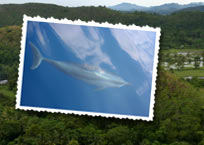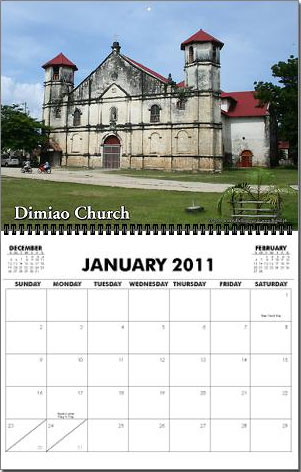Bohol's Old Churches
IJsselstein, Thursday, 17 May 2001 (updated: Thursday, 17 October 2013)
Bohol has a number of very old churches, dating back to the early years of the Spanish colonization of the island.
On October 15, 2013, a 7.2 magnitude earthquake destroyed the churches of Loon, Maribojoc, and Loboc, and heavily damaged most other historic churches in Bohol. In memory of those churches, I will be placing my collection of photographs on my facebook account. More images of the churches of Loon, Loboc, Baclayon and Calape are already available. I invite everybody with detailed photographs that can be used to document those churches to share them as well.
Baclayon
The Church of Our Lady of the Immaculate Conception in Baclayon is considered to be one of the oldest churches in the Philippines. It is one of the best preserved Jesuit build churches in the region, although in the 19th century, the Augustinian Recollects added a modern facade and a number of stone buildings that now surround the church.
The first Spanish missionaries or doctrineros in the region, Fr. Juan de Torres and Fr. Gabriel Sanchez, first settled in Baclayon in 1595. Shortly after their arrival, a visita was erected on the spot.
Although Baclayon was the first seat of the Spanish Jesuit missionaries, fear of Moro marauders soon forced them to move their headquarters more inland, to Loboc. Only in 1717, Baclayon became a parish, and construction of a new church commenced. Some 200 native forced laborers constructed the church from coral stones, which they took from the sea, cut into square blocks, and piled on to each other. They used bamboo to move and lift the stones in position, and used the white of a million eggs as to cement them together. The current building was completed in 1727. The church obtained a large bell in 1835. In the Baclayon church is a dungeon, which was used to punish natives who violated the rules of the Roman Catholic church.
Next to the church is the old convent, which also houses a small museum with centuries-old religious relics, artifacts and other antiquities, dating back to the 16th century. Included in the collection are an ivory statue of the crucified Christ looking towards heaven; a statue of the Blessed Virgin, said to be presented by Queen Catherine of Aragon; relics of St. Ignatius of Loyola, old gold embroidered ecclesiastical vestments, books with carabao skin covers, and librettos of church music written in Latin on sheep skins. Here you can also find the cuadro paintings made by the Filipino painter Liberato Gatchalian in 1859.
Getting there. Baclayon is some 6 km east of Tagbilaran. Catch a bus or jeepney in Tagbilaran, going into the direction of Baclayon. You may also find a tricycle willing to bring you there.
Loboc
The Church of San Pedro in Loboc is the second oldest church in Bohol. It was originally built in 1602, but soon reduced to ashes. In 1638, a stronger one was build. Located near the river, it has survived a number of floods. Inside the church, you can admire some remarkable naive paintings on the ceiling. A Spanish coat of arms can be found in the stone wall near the entrance of the convent. The bell tower of Loboc is about 100 meters from the church.
Attached to the building is a three storey convent, which today houses the Museo de Loboc on the third floor. This museum houses a few old statues of saints, and some other antique religious artifacts.
In Loboc, you can also admire a shameful witness of wasteful planning. Exactly next to the church is a partly finished bridge across the river. Hopefully, this bridge will never be completed, as, to do that, the Church will have to be destroyed.
Getting there. Loboc is 21 km east of Tagbilaran. Catch a bus to Loboc, or one in the direction of Carmen, and ask the driver to drop you off at the church.
Loon
The Church of Our Lady of Light in Loon is the biggest church in Bohol. At the spot of the current church, a chapel was constructed during the term of Fray Manuel de Elizalde in 1753. Some fifty years later, the Augustinian Recollects replaced by the current church in Ionic and Corinthian style. The building has two towers octagonal bell towers, and is fully symmetric.From Loon Church leads of long stairway of 174 stone steps, which connect Napo, the former seat of the town.
Wood to build the church was carried from the forest of Maitum by forced laborers, who had to beat their way through uncharted trails and across rivers.
Getting there. Loon is some 25 km north-west of Tagbilaran City, along the route to Tubigon. Catch a bus to Tubigon from the Integrated Bus Terminal and ask the driver to let you out in Loon.
Dauis Church
Another beautiful church in Bohol is the Church of Our Lady of the Assumption in Dauis, on the Island of Panglao. It is located not far from the bridge that connects Panglao with Bohol. The church was founded by the Jesuits Fr. Diego de Ayala and Joseph Gregorio. The church is build in a mixture of styles, influenced by both Byzantine and Romanesque architecture. Inside, on the ceiling, are some impressive frescoes painted Ray Francia in 1916. Lito Arraya renovated the building in 1970.
The church's patron saint, the Virgin of the Assumption, is said to possess miraculous powers. An old legend relates that once, when the town was invaded by pirates, the people of Dauis locked themselves into the church. However, they soon ran out of provisions and water. Then a miracle occurred: a well appeared at the foot of the altar. This same well is still the main source of water for the people living close to the church, and, although the well is only a few meters from the sea, the water is absolutely fresh. The water is said to have healing powers, so, if you're visiting here, don't forget to bring a bottle and take some home.
Getting there: The church is a nice three kilometer walk from Tagbilaran city. Alternatively, you may catch a tricycle or jeepney to bring you across.
Maribojoc Church
The parish of Maribojoc was founded in 1768, and construction of a church started 1798 and lasted 18 years.
Getting there: The church is located in Maribojoc town, 14 kilometers from the Tagbilaran. The place can be reached by bus of jeepney.
Panglao Church
The church of Panglao is located on the south-western side of Panglao Island, 18 kilometers from Tagbilaran. The church is noteworthy because of its twin antique confessionals carved with grape and dove patterns. Its ceiling murals depict the sacraments.
Further Reading
The National Commission for Culture and the Arts published a 123 page book with a description of the over 40 churches on Bohol. This book, Visita Iglesia Bohol: A Guide to Historic Churches by Jose Regalado Trota, includes a short historical introduction of each church, and continues with a tour around the church complex. Includes black and white pictures.
This book includes a lot of interesting details. It was named by the Philippine Headline News as one of the most charming books of 2001.
Jeroen Hellingman
What readers think...
| Blue Freedom Apnea wrote: |
| Monday, 6 January 2020 12:07:39 PHT |
| There is new freediving school open in Panglao, Bohol. They are non-profit organization that offer AIDA and Molchanovs courses from beginner level to instructor level. If you want to explore Balicasag island in Panglao, you can also do fun dive with them. Checkout their website is https://bluefreedomapnea.com . You can also send an enquiry to their enquiry page Send Enquiry. #freedive #freediving panglao #freediving bohol #freediving philippines |
| Sue feaththerstone wrote: |
| Monday, 18 November 2013 06:46:53 PHT |
| Are any of the churches still standing? |
| Isidro O. Galido wrote: |
| Thursday, 14 November 2013 00:48:47 PHT |
| It's so heartbreaking to see our centuries-old churches topple down in wink of seconds, if not, minutes to that mag 7.2 tremor, and thousands of aftershocks thereafter. It took many years for our great, great forefathers in involuntary servitude for these churches to be standing there until that horrible hours of October 15th decimated the structures. These were ones our cultural heritage for generations and churches may again be there stand sometime in the future, yet, it would never be the same again. All we can do is accept the fate we've gone along with our prayers to be able to rise again from ruins. THY WILL BE DONE OH LORD and unto thy hands we commend the future of the next generation ... So be it. |
| Agustina wrote: |
| Thursday, 24 October 2013 23:33:33 PHT |
| Hey! Good Day! Just wanna ask please what is the present contact number of the panglao church. I have been searching couple of times already but i cannot find it. Thanks in advance! |
| Adriene Cabalinan wrote: |
| Sunday, 20 October 2013 12:03:19 PHT |
| Hi Mr. Hellingman, We would like to ask your permission to let us use your photos offive churches in Bohol (Loon, Maribojoc, Loboc, Dauis, Baclayon). We recently did a documentary about the destroyed churches due to the earthquake and it will air tomorrow 11:30PM on GMA 7. Rest assured that your photos will be given appropriate credits. Thank you. Sincerely, Adriene Cabalinan Researcher GMA I-Witness argonala@gmail.com |
Read all 122 comments by readers.
Also give your comments on this article
We reserve the right to remove or edit comments posted on this website. Please read our conditions of use for details. You can use <i>italics</i>, <b>bold</b>, <p> new paragraph, <a href="url">link</a>. Other markup will be removed. Use of the forums for advertising is prohibited. Enterprises located in Bohol can request to be added to the business directory.
 Printer friendly version
Printer friendly versionThis article has been viewed 525 times.
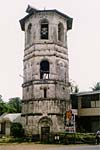
Loboc Tower
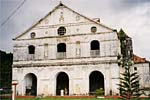
Loboc church
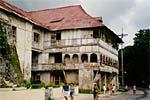
Loboc Museum
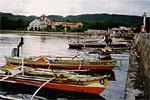
The Pier of Baclayon
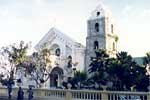
Tagbilaran Cathedral

Baclayon Church

Baclayon church interior
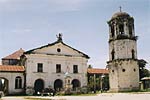
Loay Church
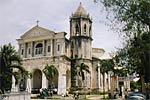
Dauis Church
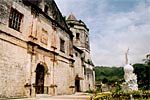
Maribojoc Church
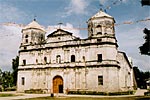
Loon Church




